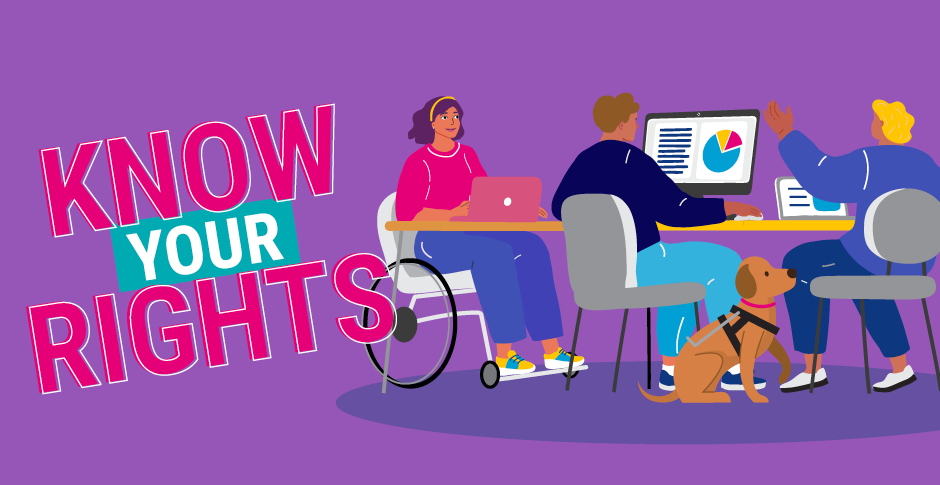The ability to give and receive feedback is an important skill which, when delivered effectively, can bring about positive change. Yet giving and receiving feedback is often one of the things we fear the most in the workplace. So, is there a way to make sure feedback conversations are constructive and positive, rather than something to be avoided?
According to Kon Krios, Head of Learning and Organisational Development at SEEK, if you can master the art of giving feedback, you are creating a valuable opportunity to help others reach their full potential.
Kon recommends using a tool developed by global provider of professional development training the Centre for Creative Leadership called the Situation — Behaviour — Impact (SBI) model.
“The SBI method provides a clear, simple structure for delivering feedback that helps keep your message focused and constructive and increases the likelihood it will be received in a positive way,” he says.
So how does it work?
Situation.
The first step when you’re giving feedback is to clearly outline the situation you’re referring to. This puts the feedback into context and gives the recipient a specific reference.
For example:
“During the meeting last week with our client Peter…”
“During the meeting yesterday when John spoke to you in an aggressive way…”
Behaviour.
The next step is to describe the specific behaviours that you want to address. It is very important to only address behaviours that you have observed directly, rather than making assumptions or being subjective about those behaviours. Make sure you focus on the behaviours, not the person – this will help to ensure that the recipient does not feel under personal attack.
For example:
“During the meeting last week with our client Peter, I noticed you spoke over him three times, and when he attempted to speak, you appeared dismissive.”
“During the meeting yesterday when John spoke to you in a way that I experienced as aggressive, I noticed your tone stayed calm and you were able to clearly address the two issues that he was concerned about.”
Impact.
The last step is to describe how the other person’s action has affected the business, you or others. Make sure the feedback being given is enabling, so the person on the receiving end can take action on the feedback being given.
For example:
“During the meeting last week with Peter, I noticed you spoke over him three times, and when he attempted to speak, you appeared dismissive. I think this had a negative impact on our relationship with the client who appeared to leave the meeting feeling unheard. I felt disappointed and saw it as a missed opportunity.”
During the meeting yesterday when John spoke to you in a way that I experienced as aggressive, I noticed your tone stayed calm and you were able to clearly address the two issues that he was concerned about. I was thrilled about the way you handled this difficult situation and it has helped us foster trust in the relationship.”
Asking for feedback
On the receiving side, none of us is completely self-aware. Kon suggests approaching feedback conversations with a curious and open mindset, especially when it is something you don’t want to hear.
“If you view the feedback as an opportunity to grow and develop, you are less likely to feel under attack,” Kon says.
One way to become comfortable with receiving feedback is to request it on a regular basis. Kon recommends using the SBI tool to ask for feedback and the more specific you can be in your request for feedback, the better.
For example:
[Situation] “Hi Angela, during the meeting last week when I gave my summary of actions, [Behaviour] how did you feel about my communication style? [Impact] In particular, how do you think my communication might be improved to help achieve the outcomes we are hoping to achieve in the forthcoming year?”
The SBI method can provide a clear structure for both delivering and receiving feedback. Make sure you take the time to fully prepare for these conversations, and remember, regardless of whether you are on the giving or receiving side, it’s important to stay calm, manage your emotions and listen to the other person’s perspective.
Here are some useful tips for feedback conversations:
When providing feedback:
- Feedback should be timely so the person receiving the feedback is able to recall the situation easily.
- Pick the right moment. Try to choose a time when both parties are in an open frame of mind.
- Prepare well. When giving feedback, make sure you manage your thoughts and emotions, particularly when it could be challenging for the person to hear it.
- Aim to use specific information in your description of the behaviour you are giving feedback on. This helps to ensure that your comments are objective.
- Don’t just follow a script. While the SBI tool is a great way to structure the feedback, it is important to stay in tune and listen to the other person’s perspective.
- Make sure you also comment on what the person did well.
When receiving feedback:
- It’s important to listen and put yourself in a curious and open mindset.
- View feedback as an opportunity to grow and learn.
- If you don’t agree with the feedback being given, it is also okay to share your perspective on the situation.
- If you’re unsure how to interpret the feedback you’re being provided, ask the person to clarify using the SBI model.



